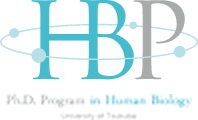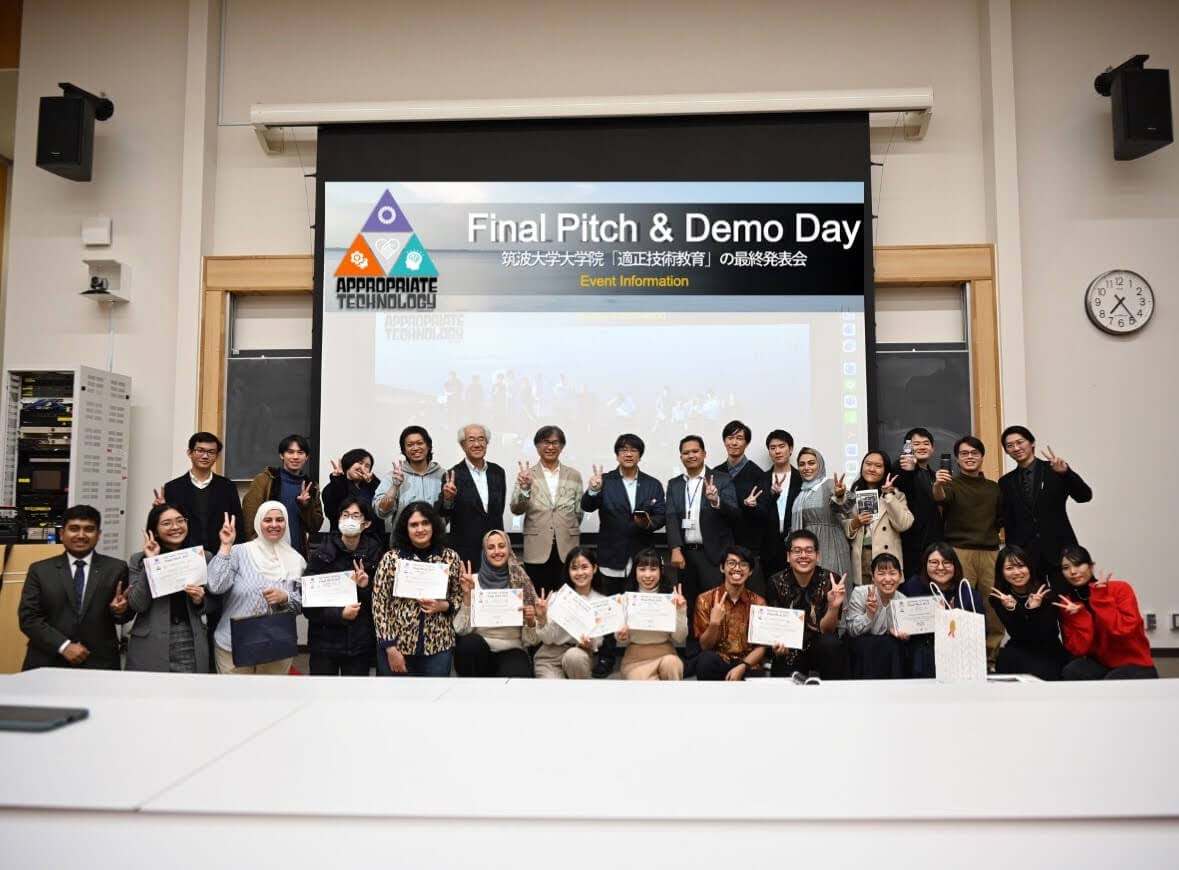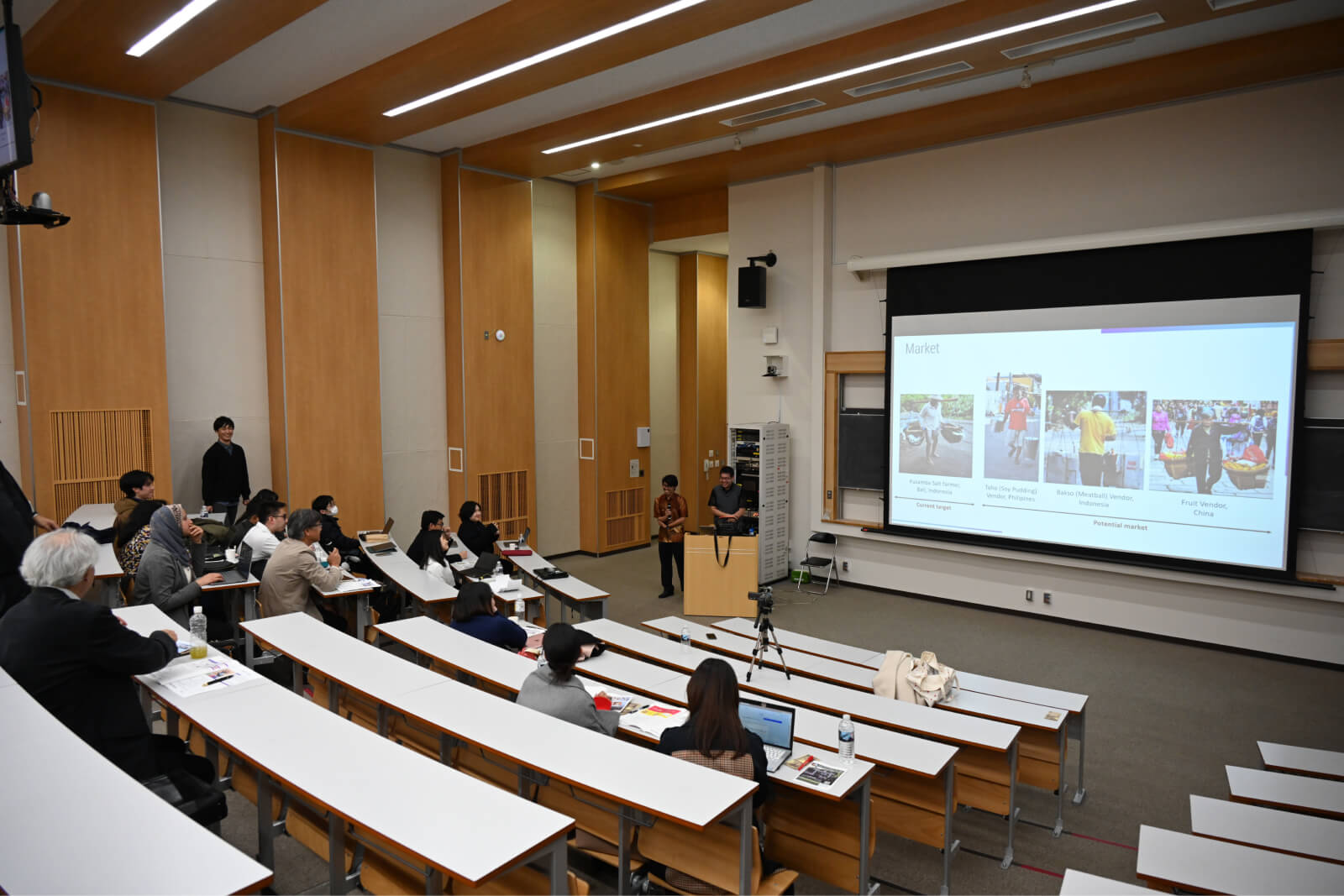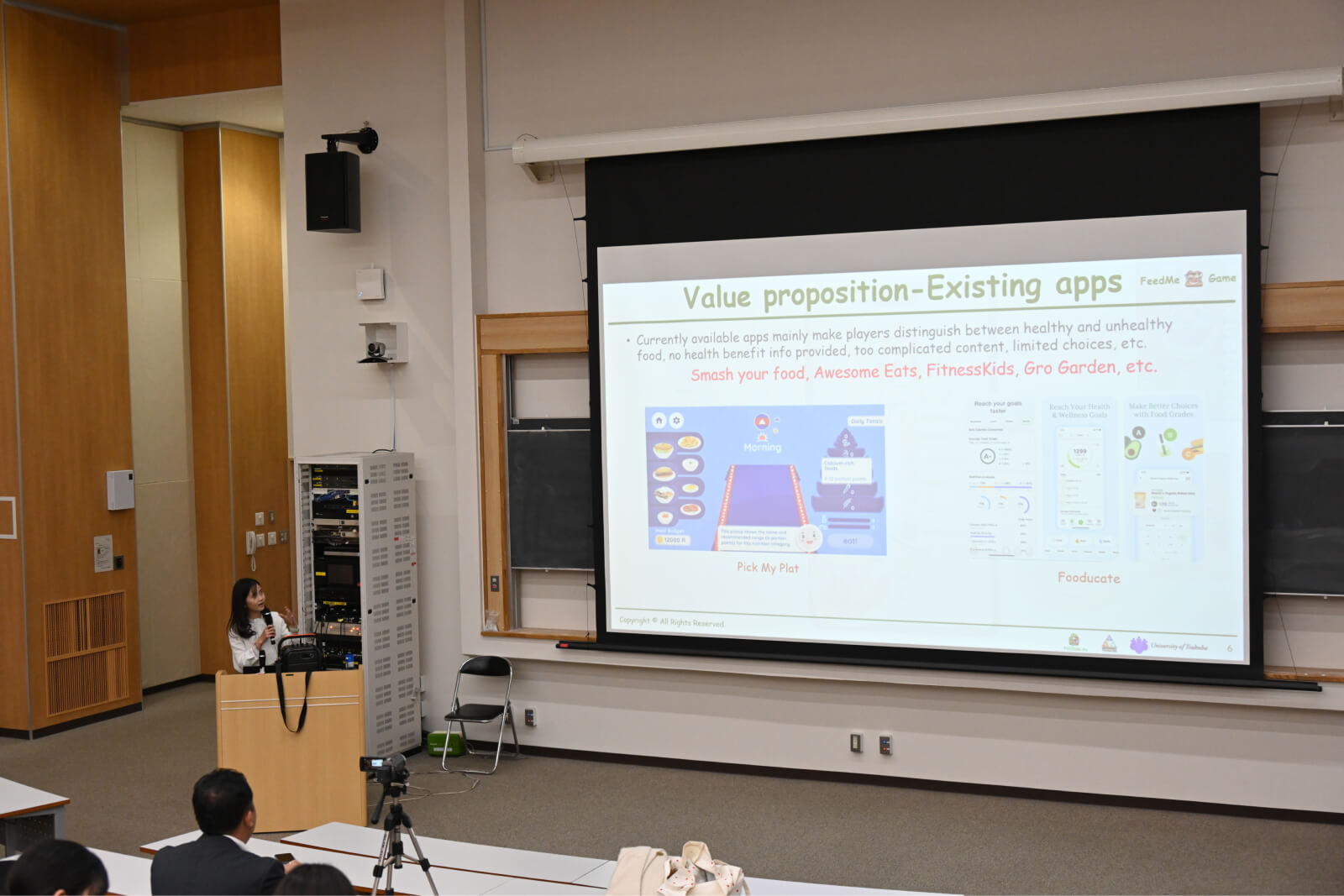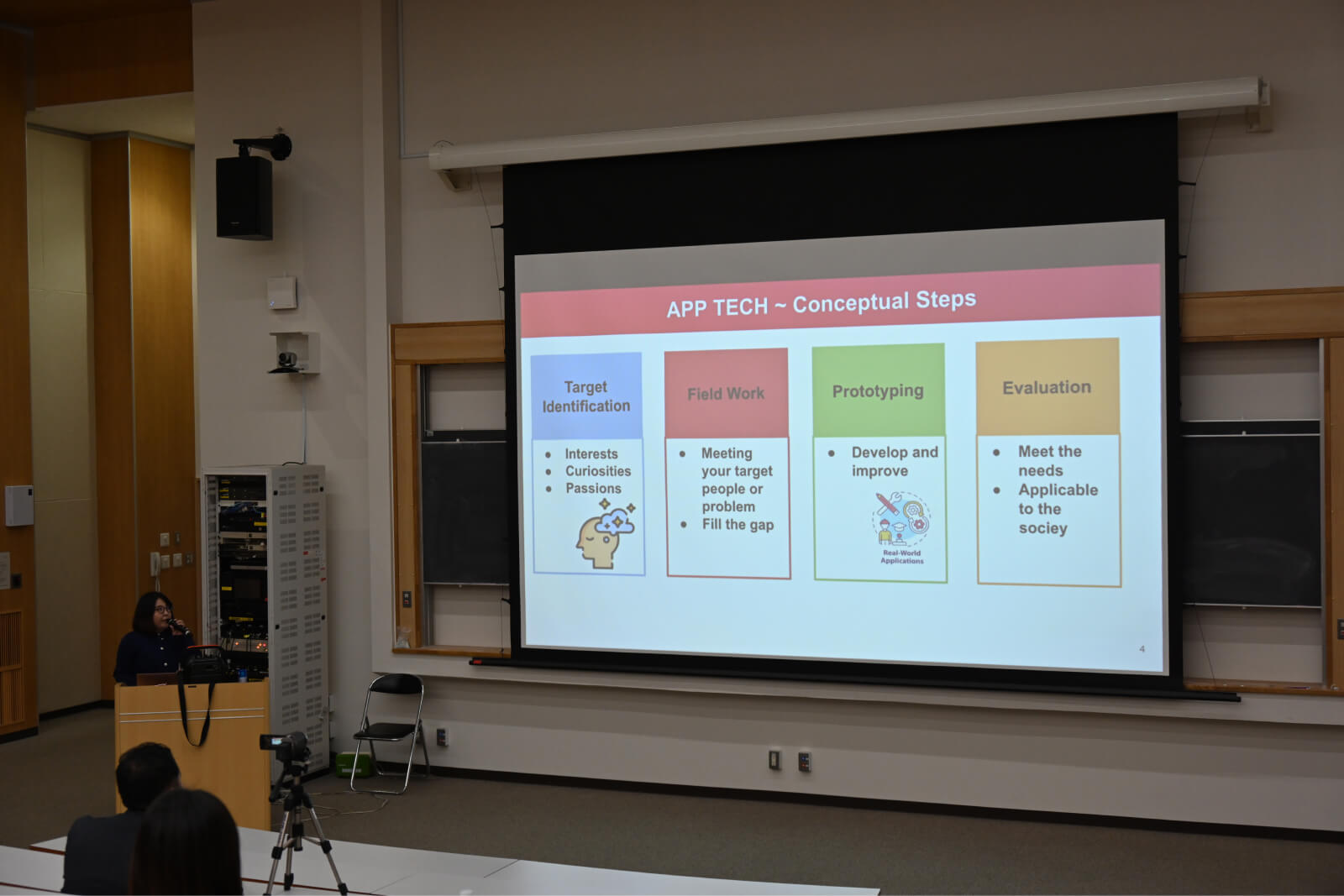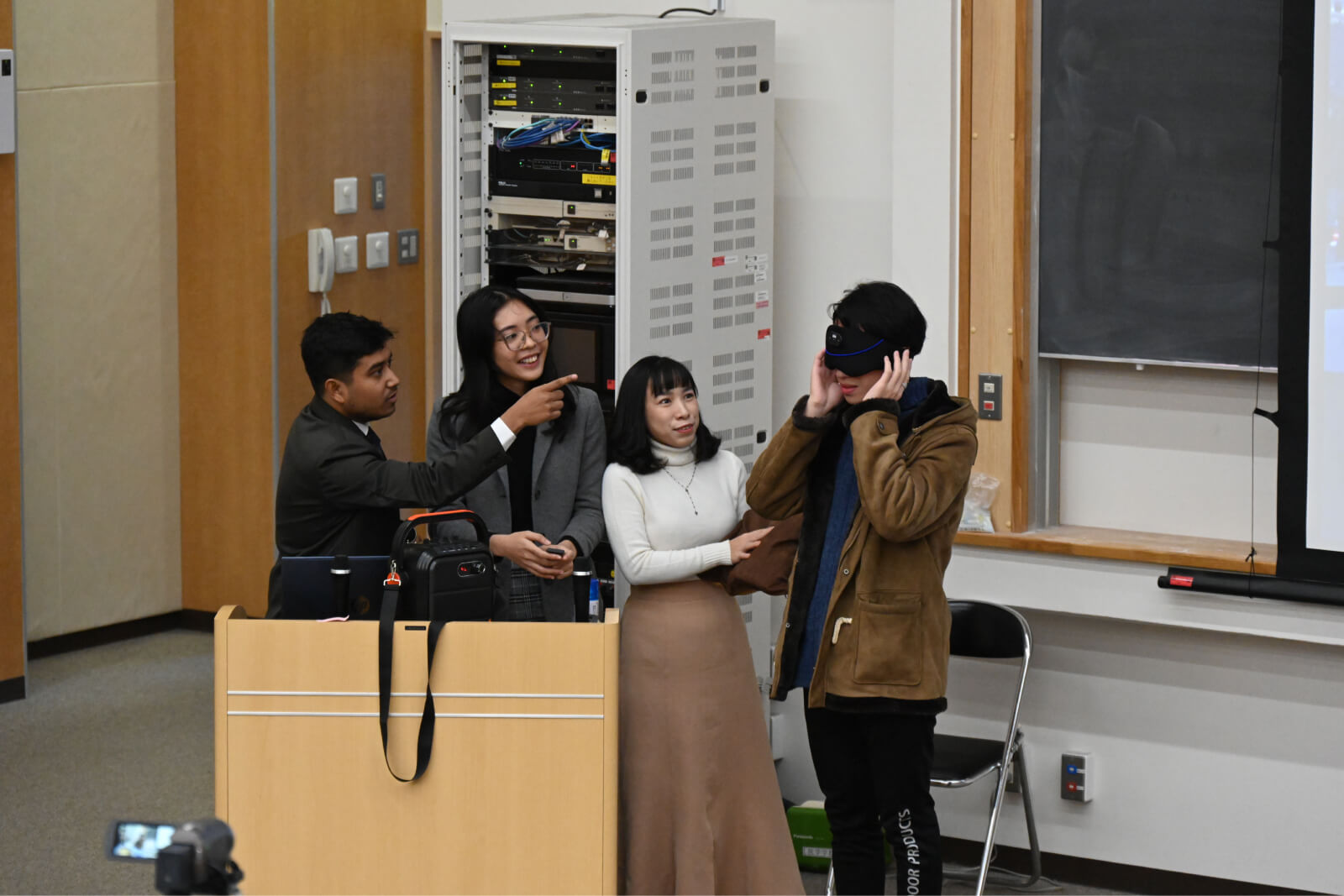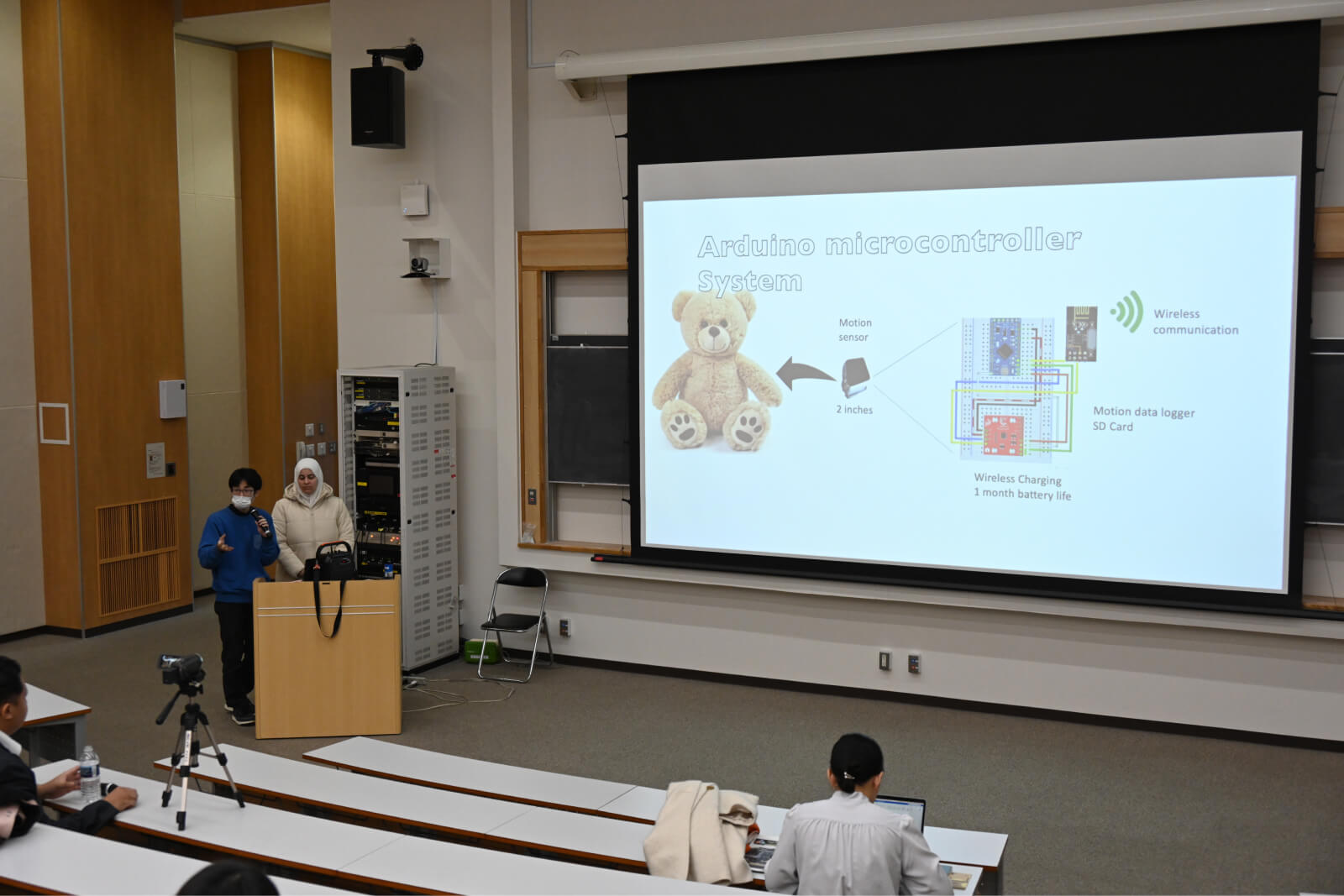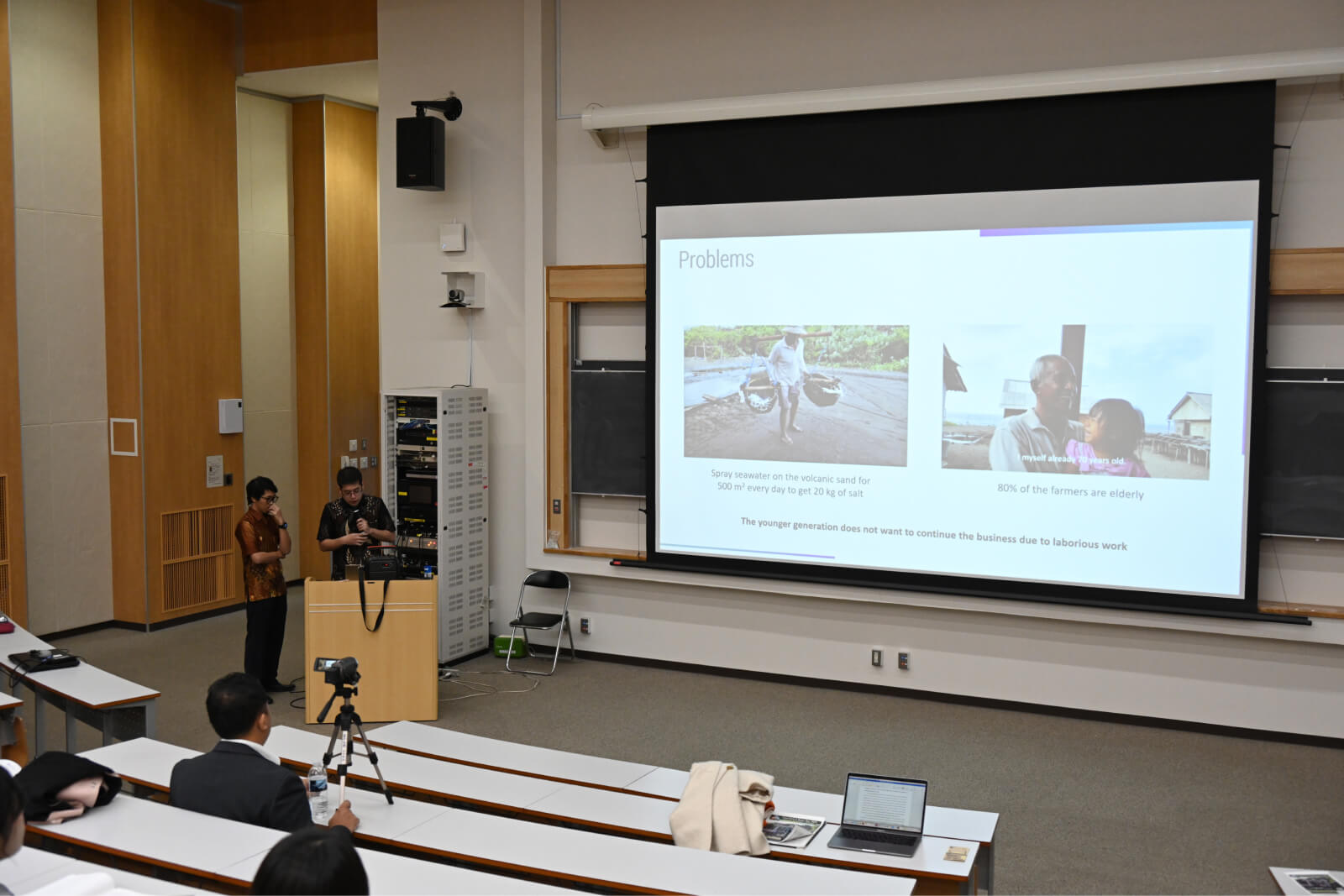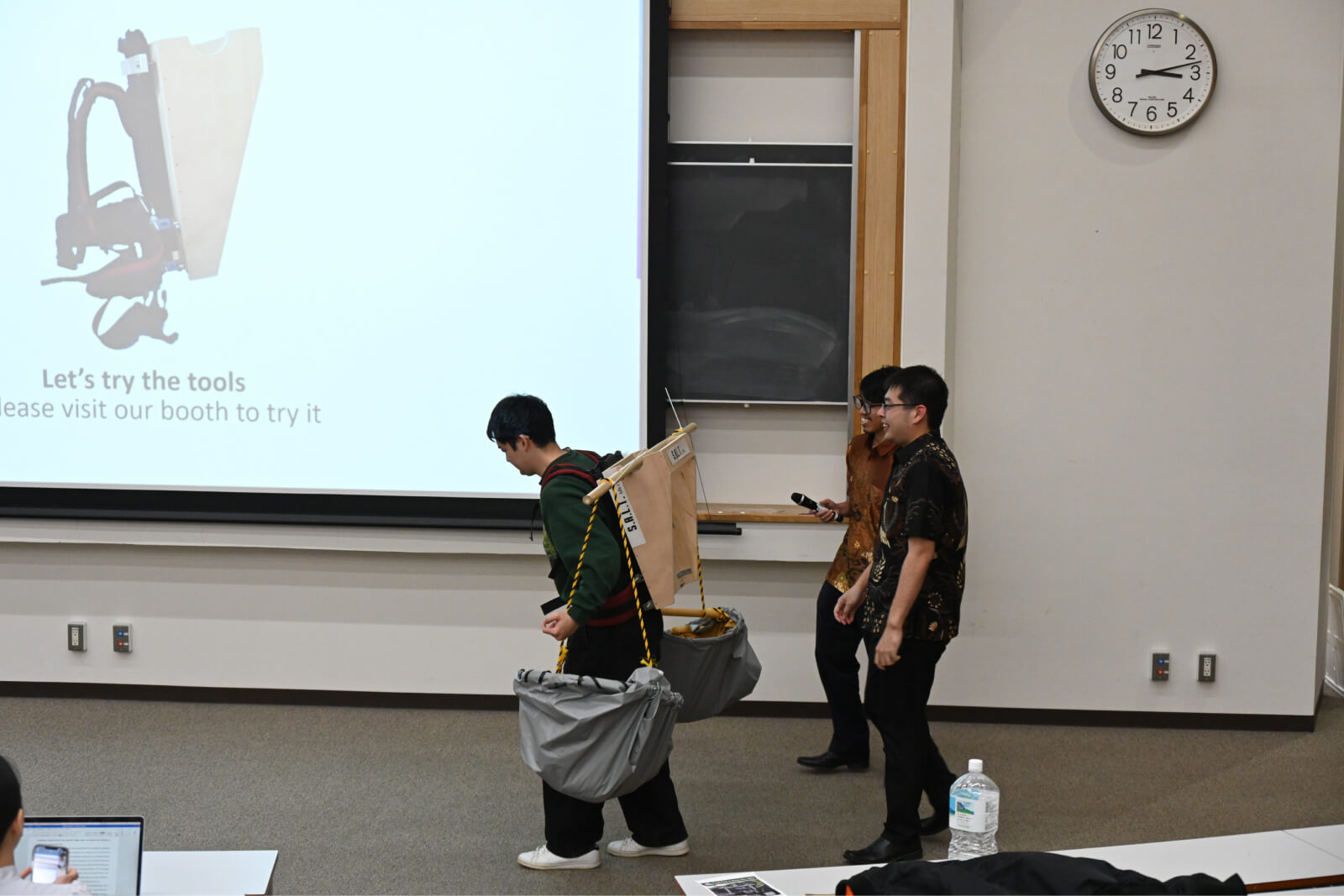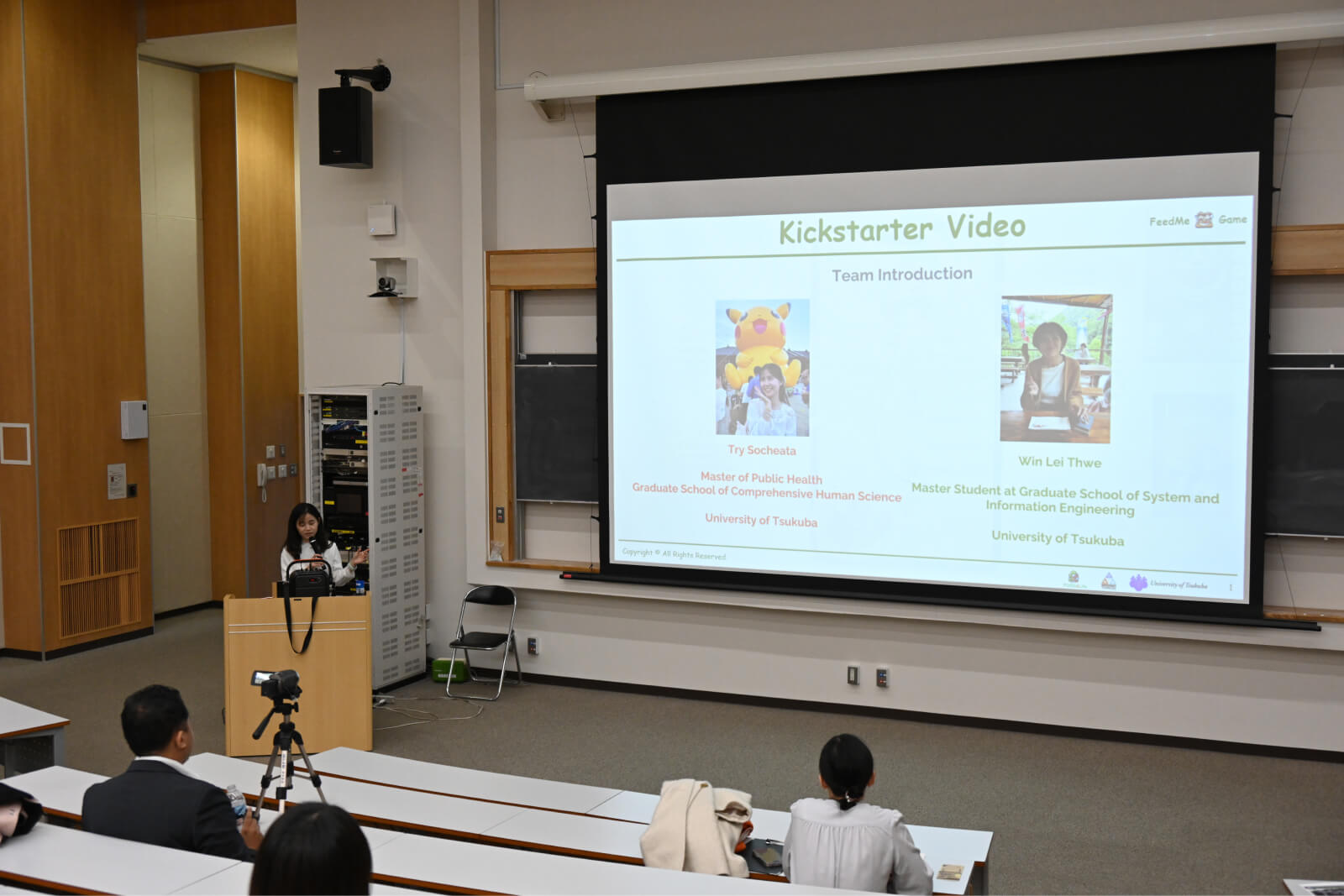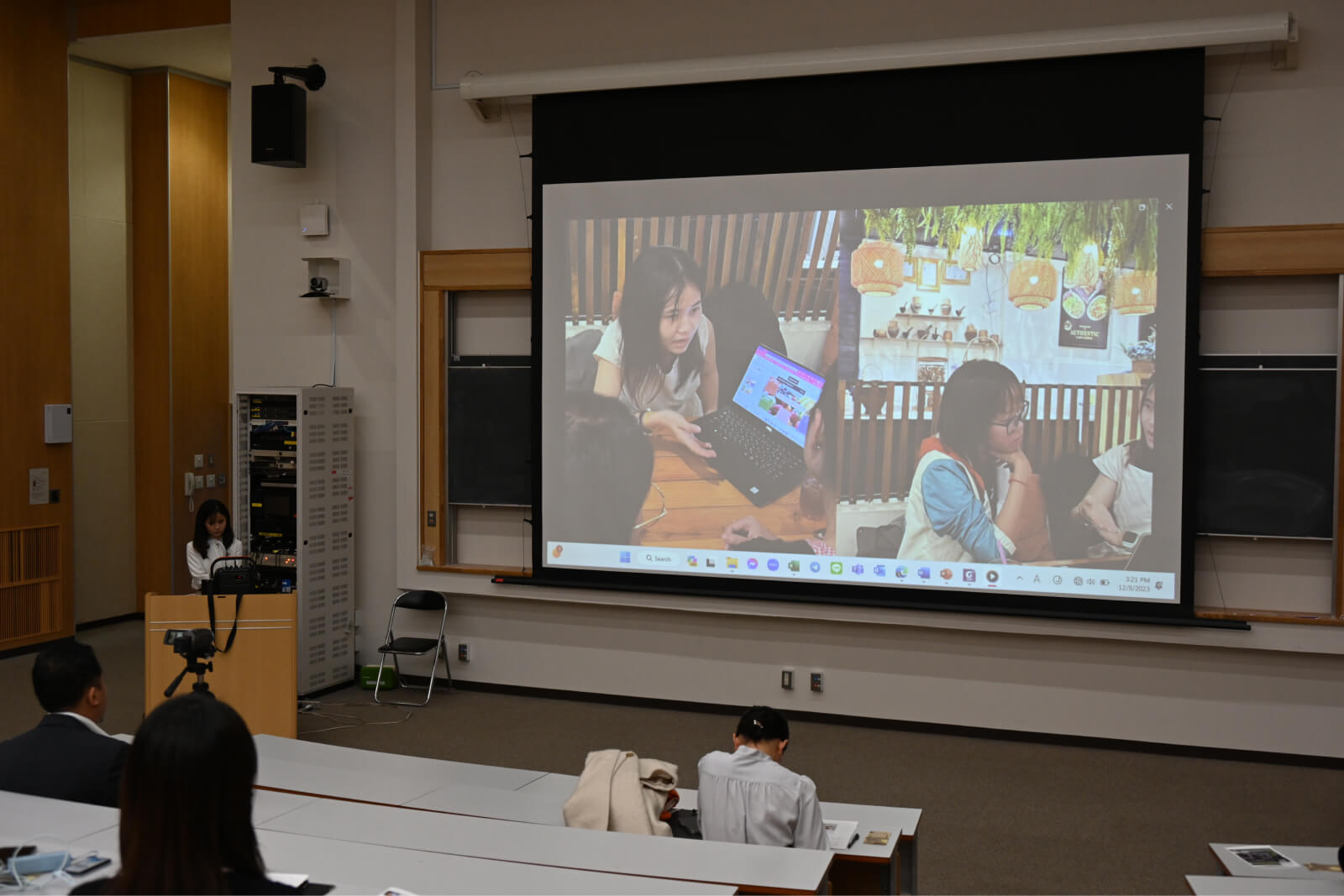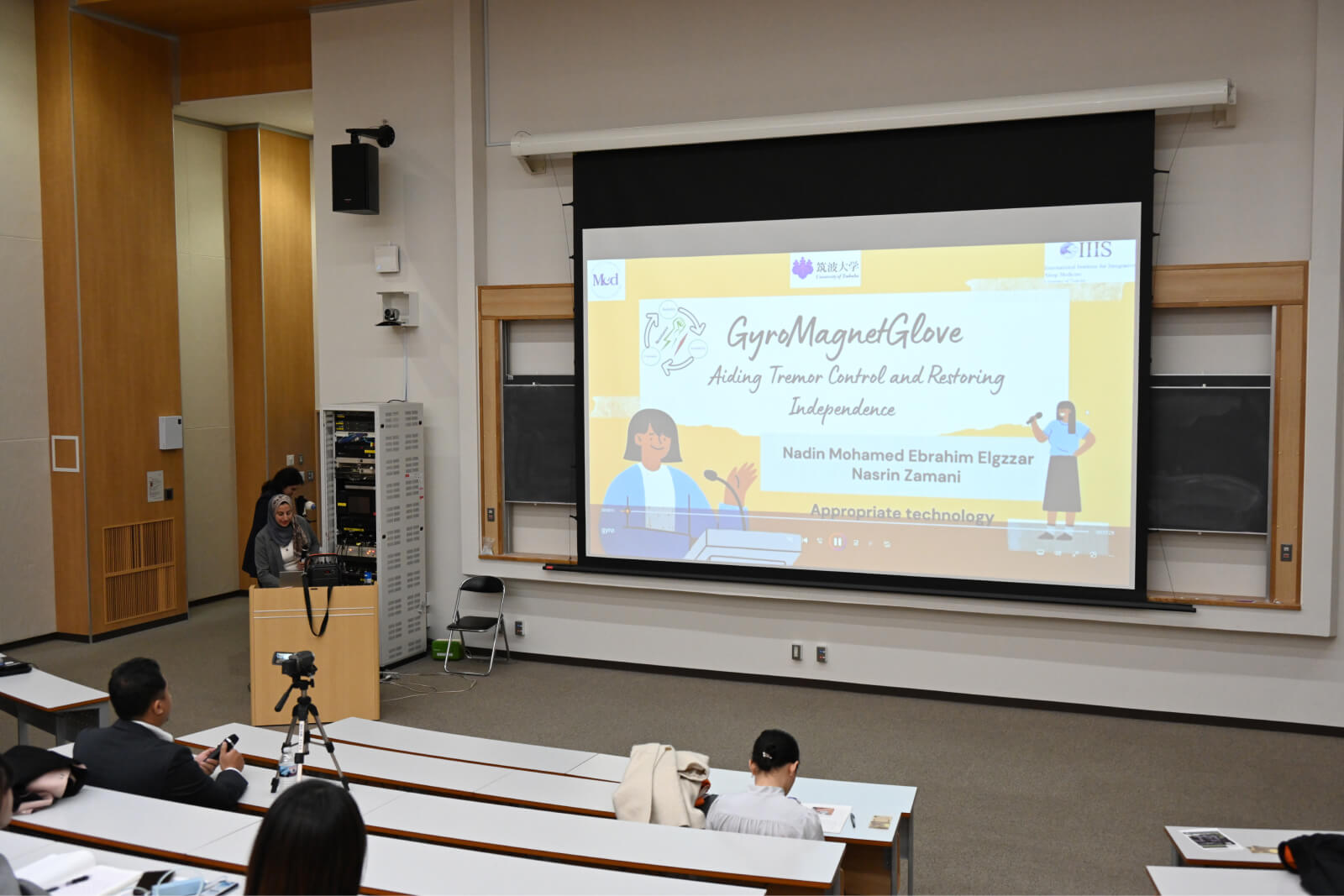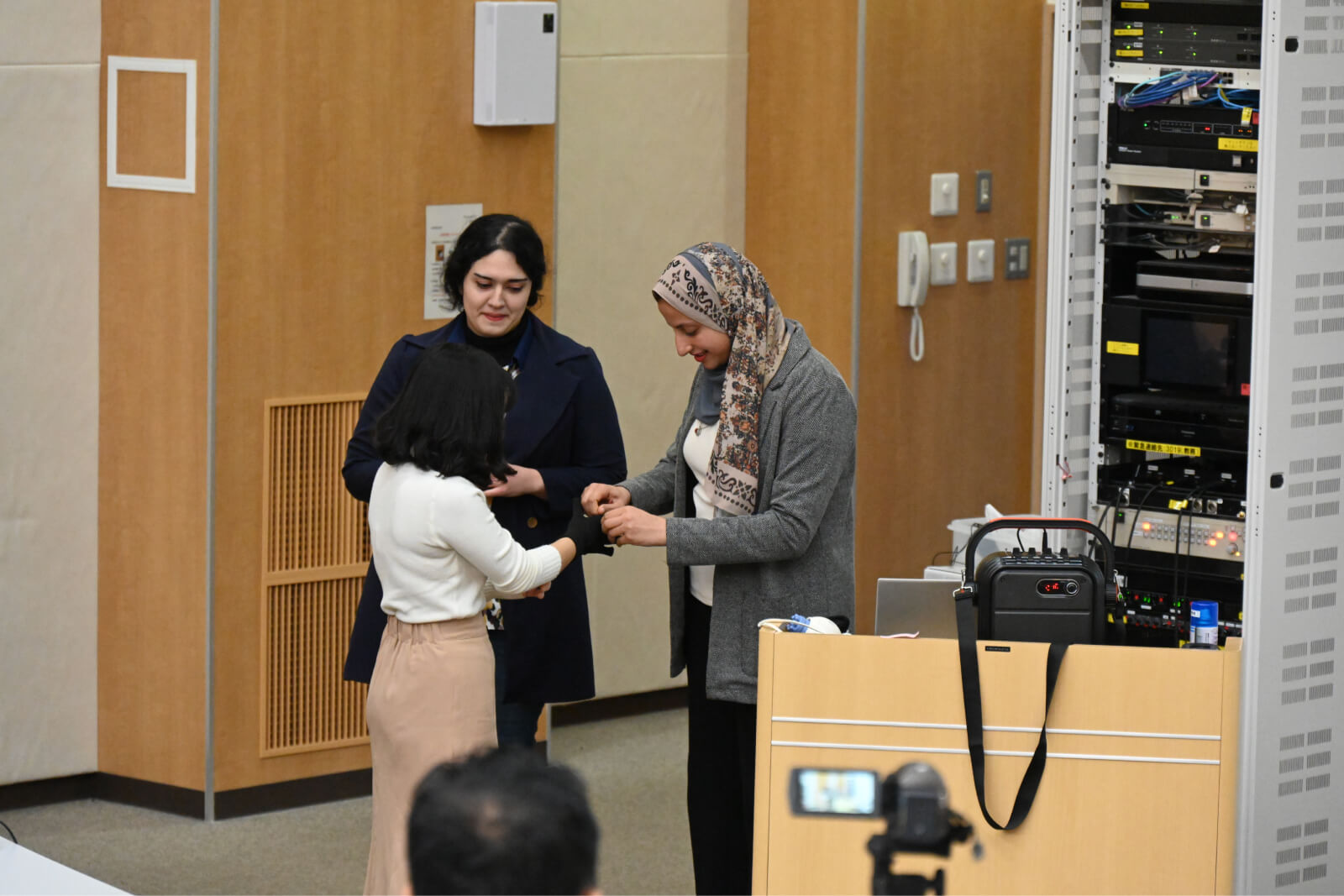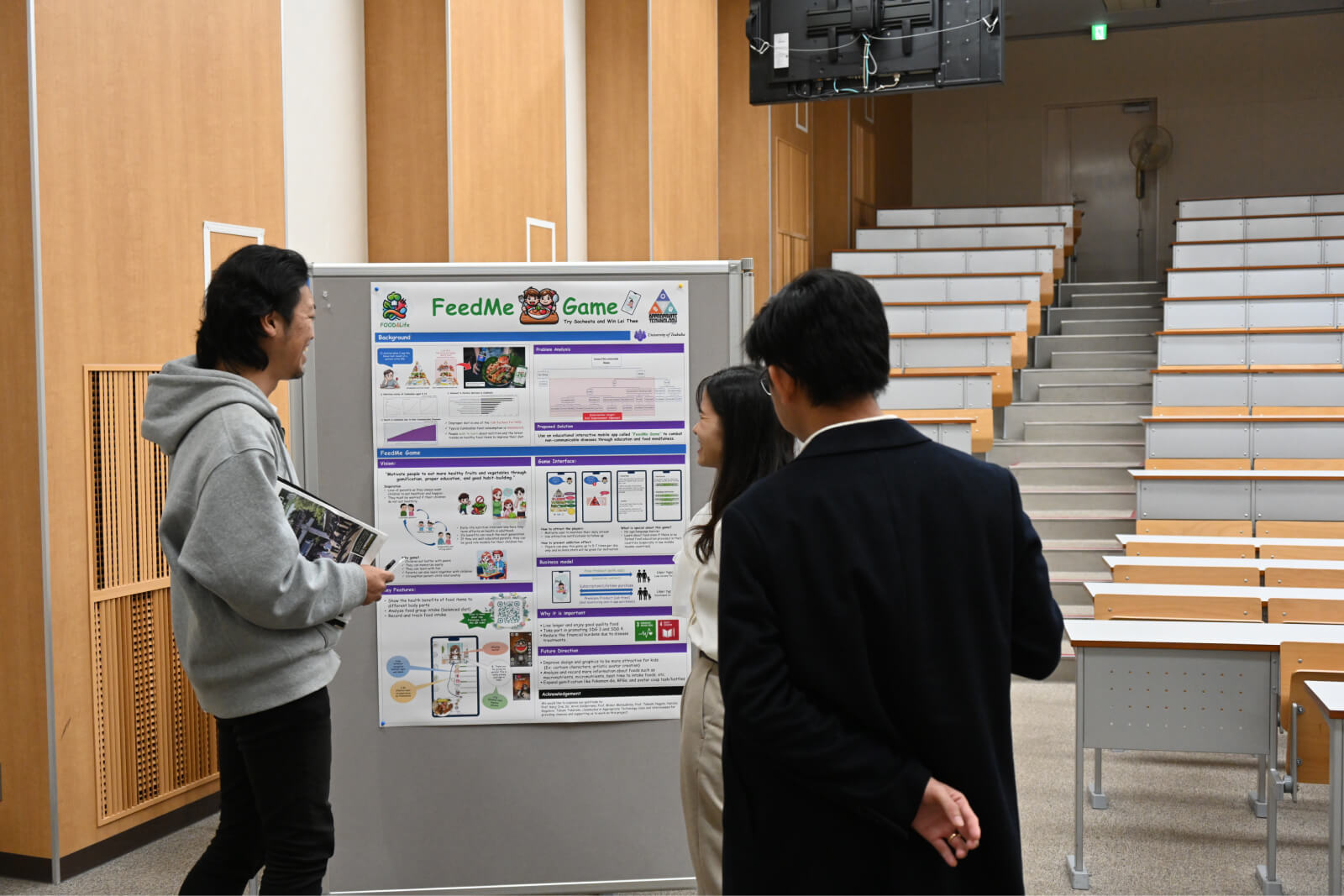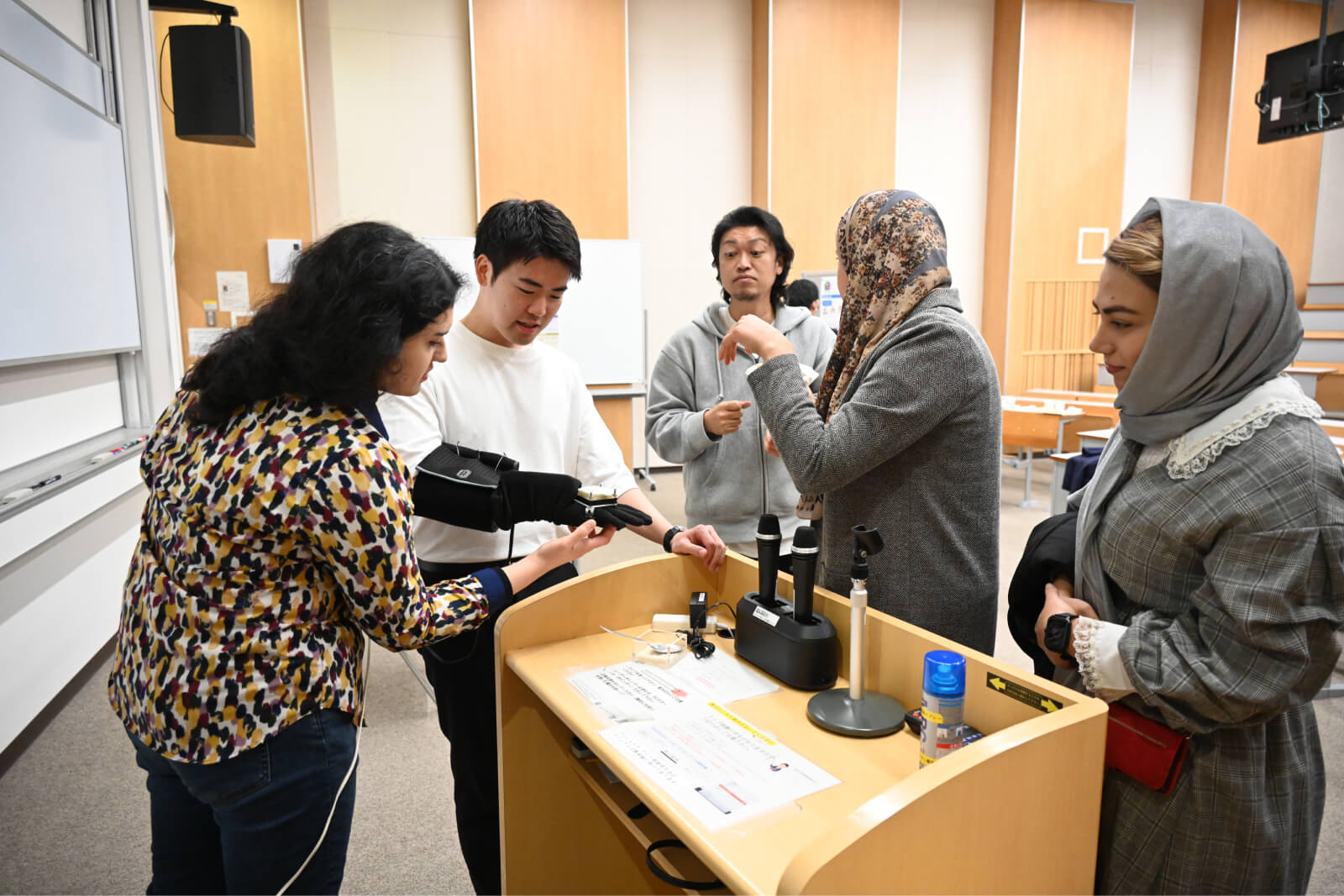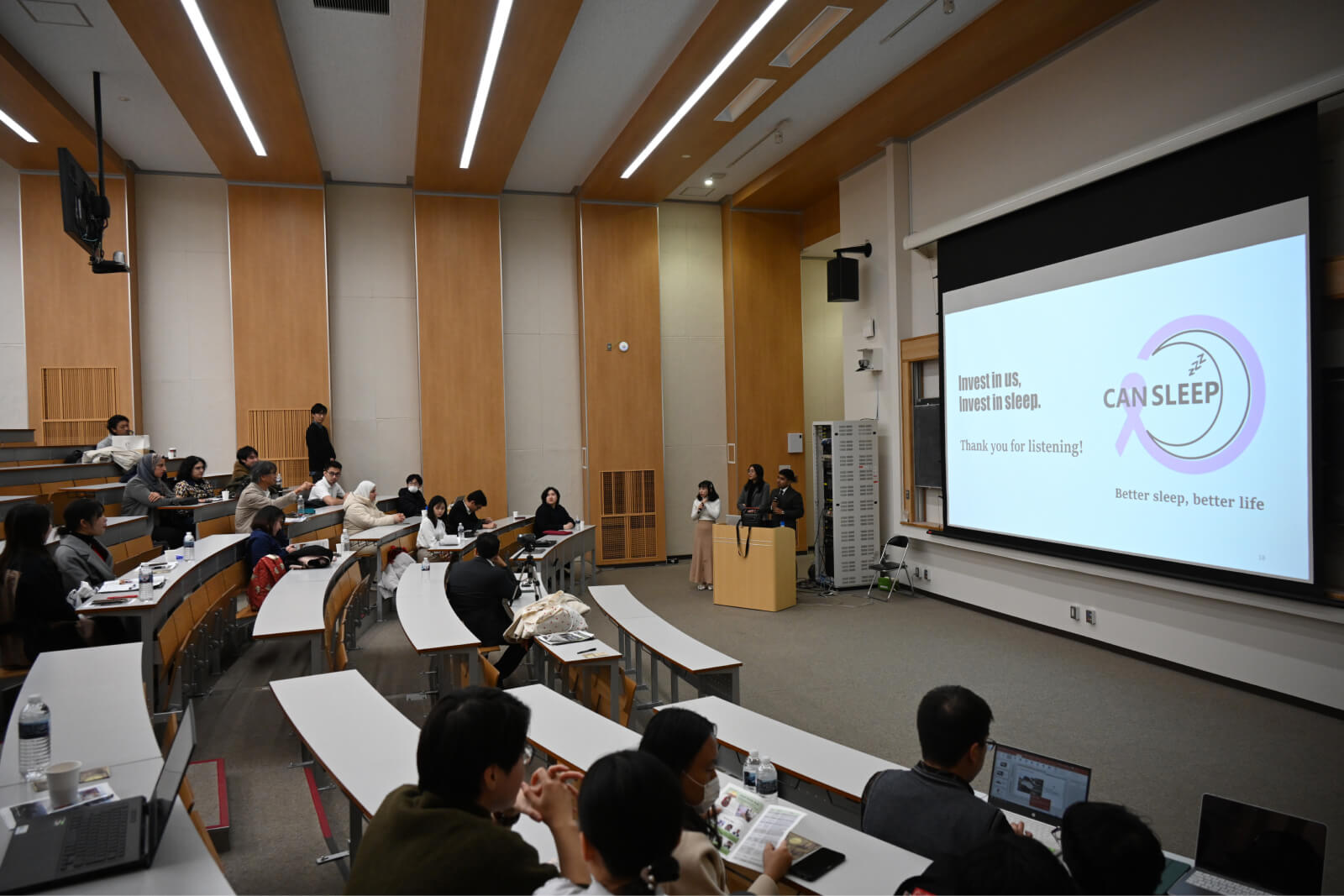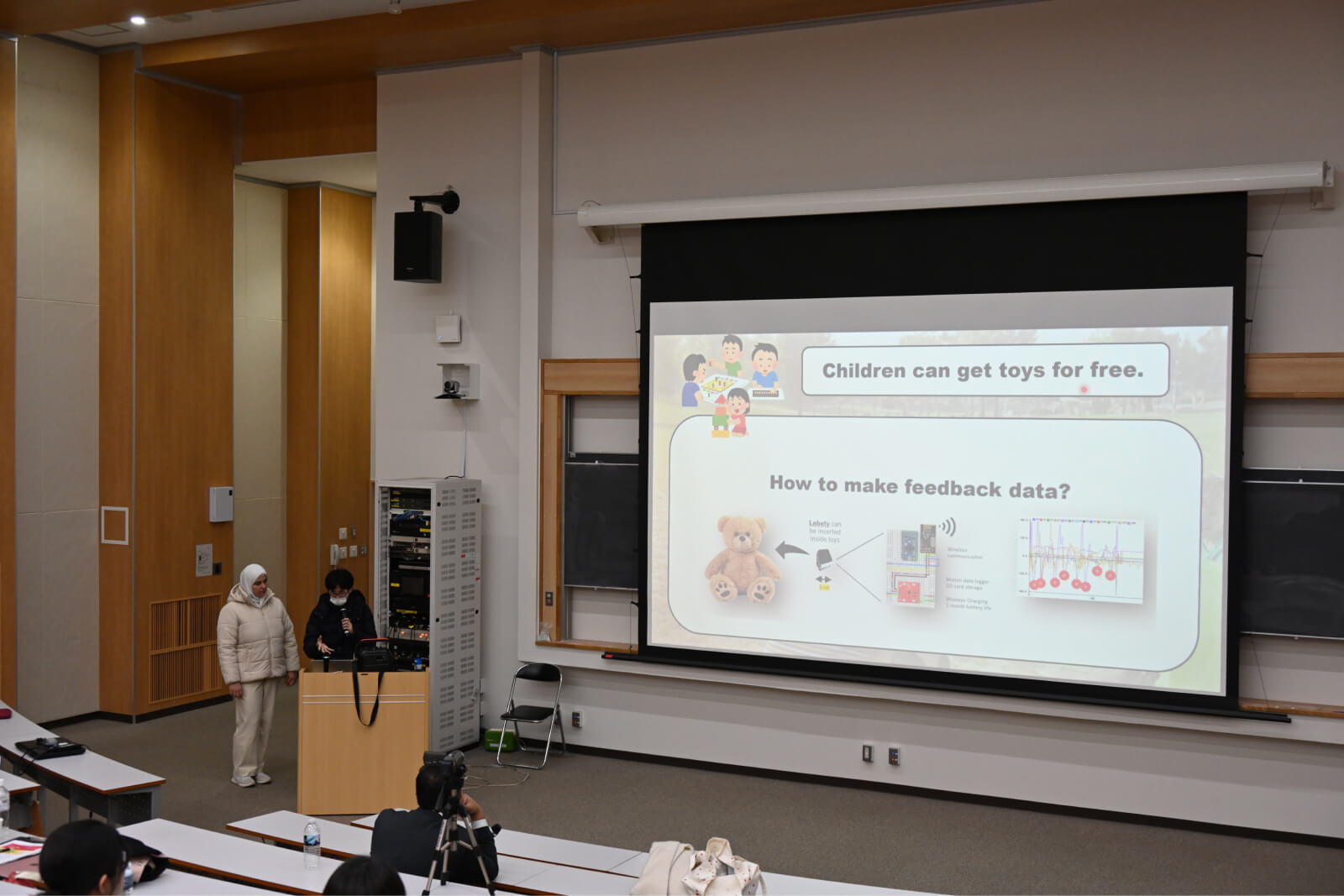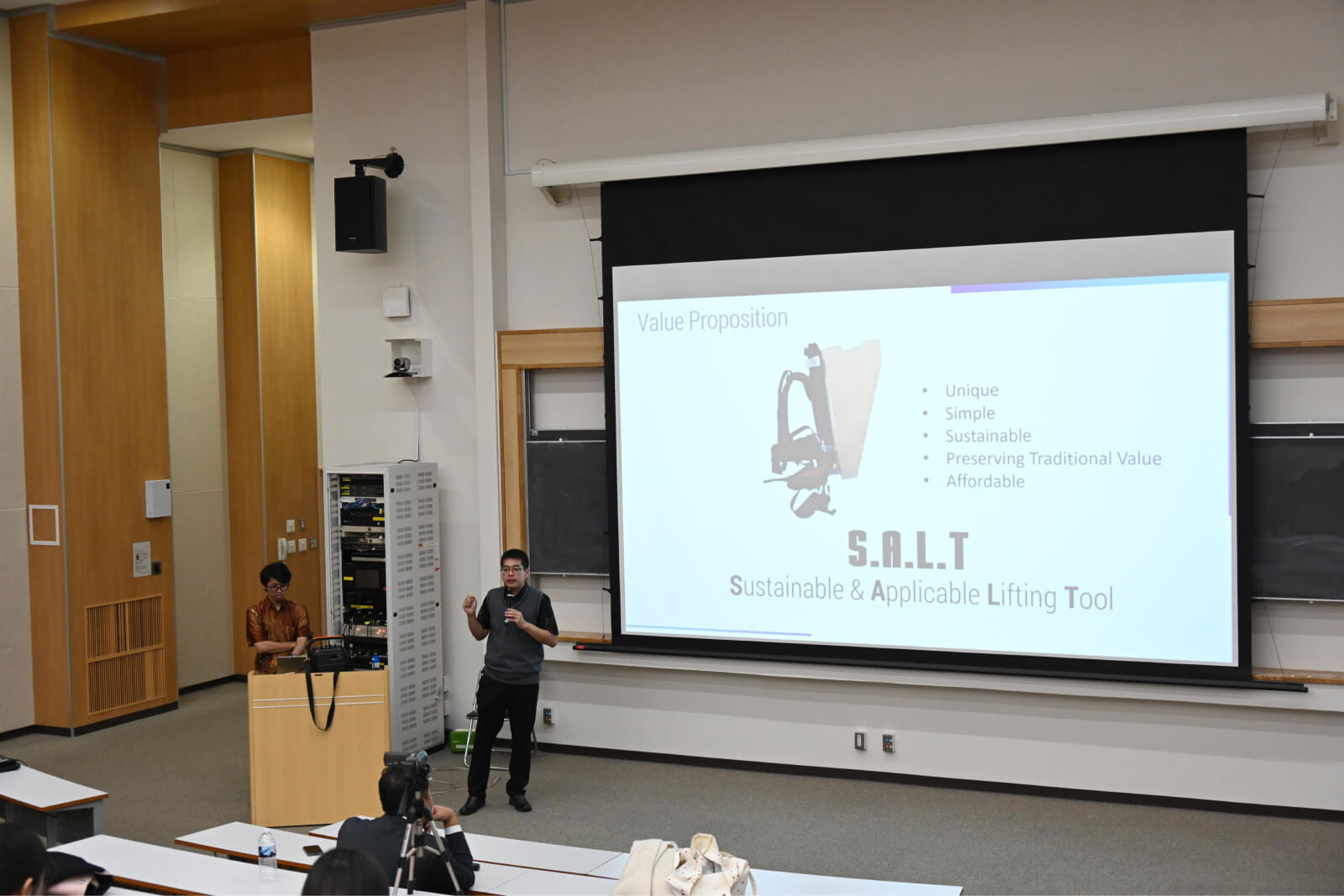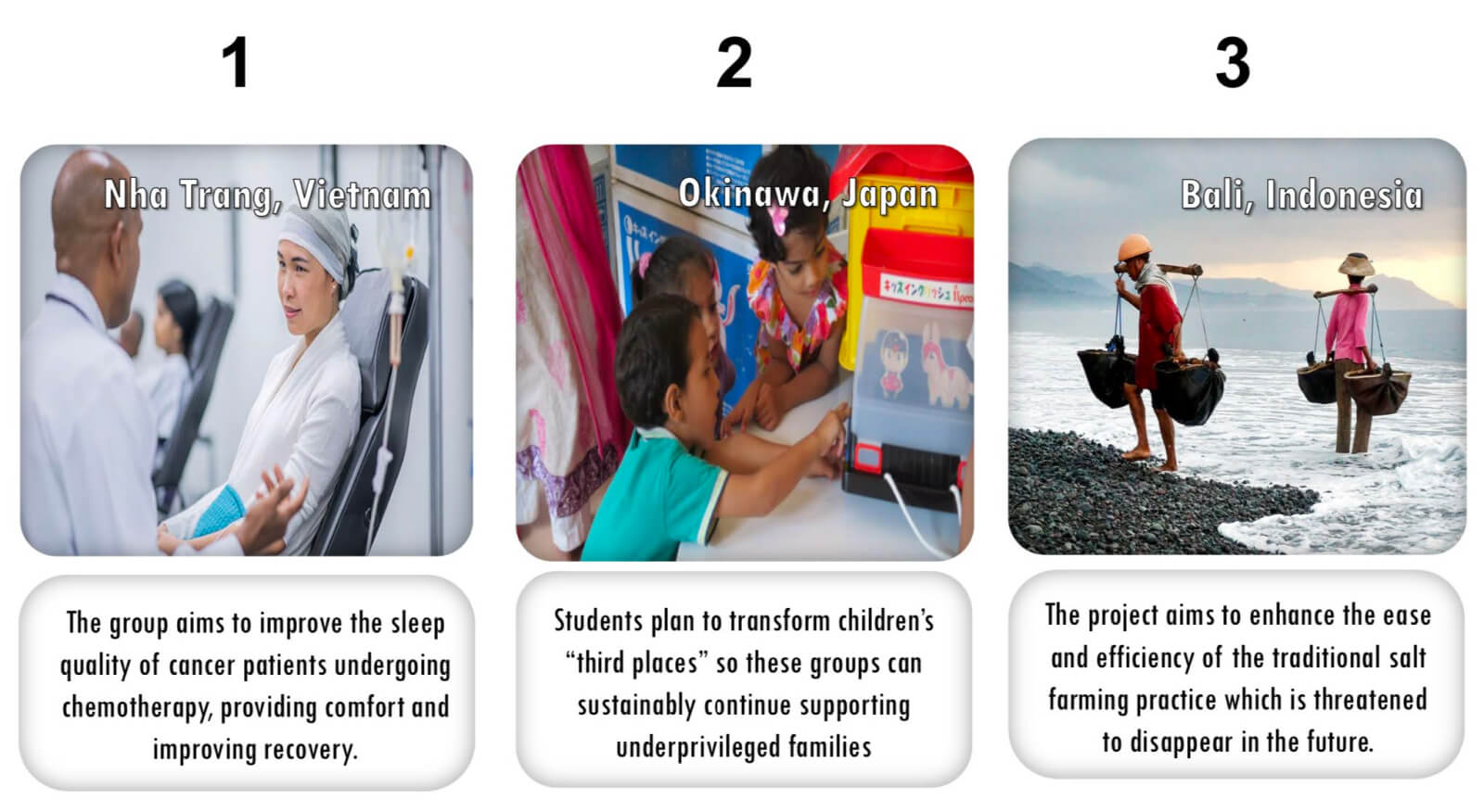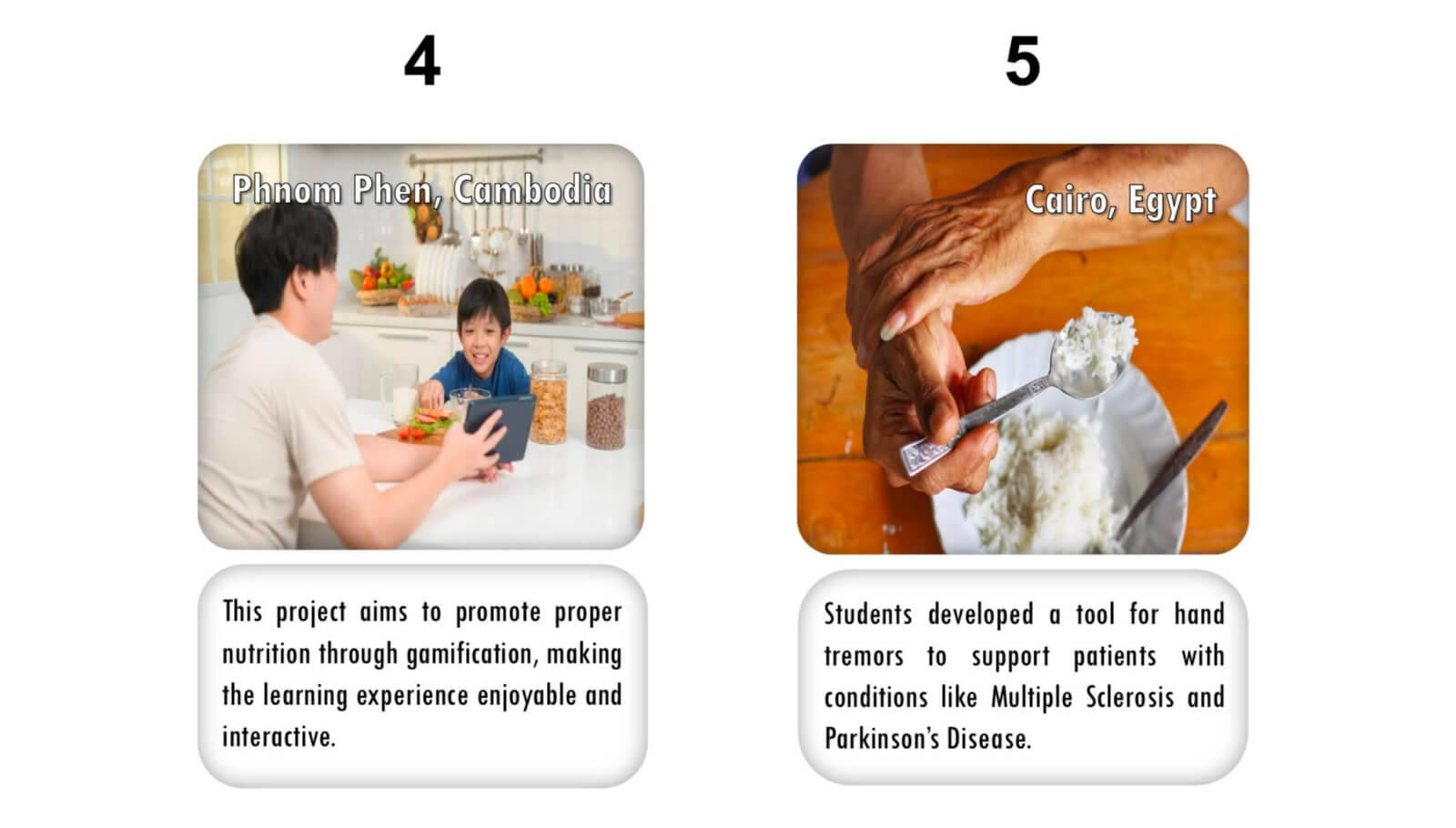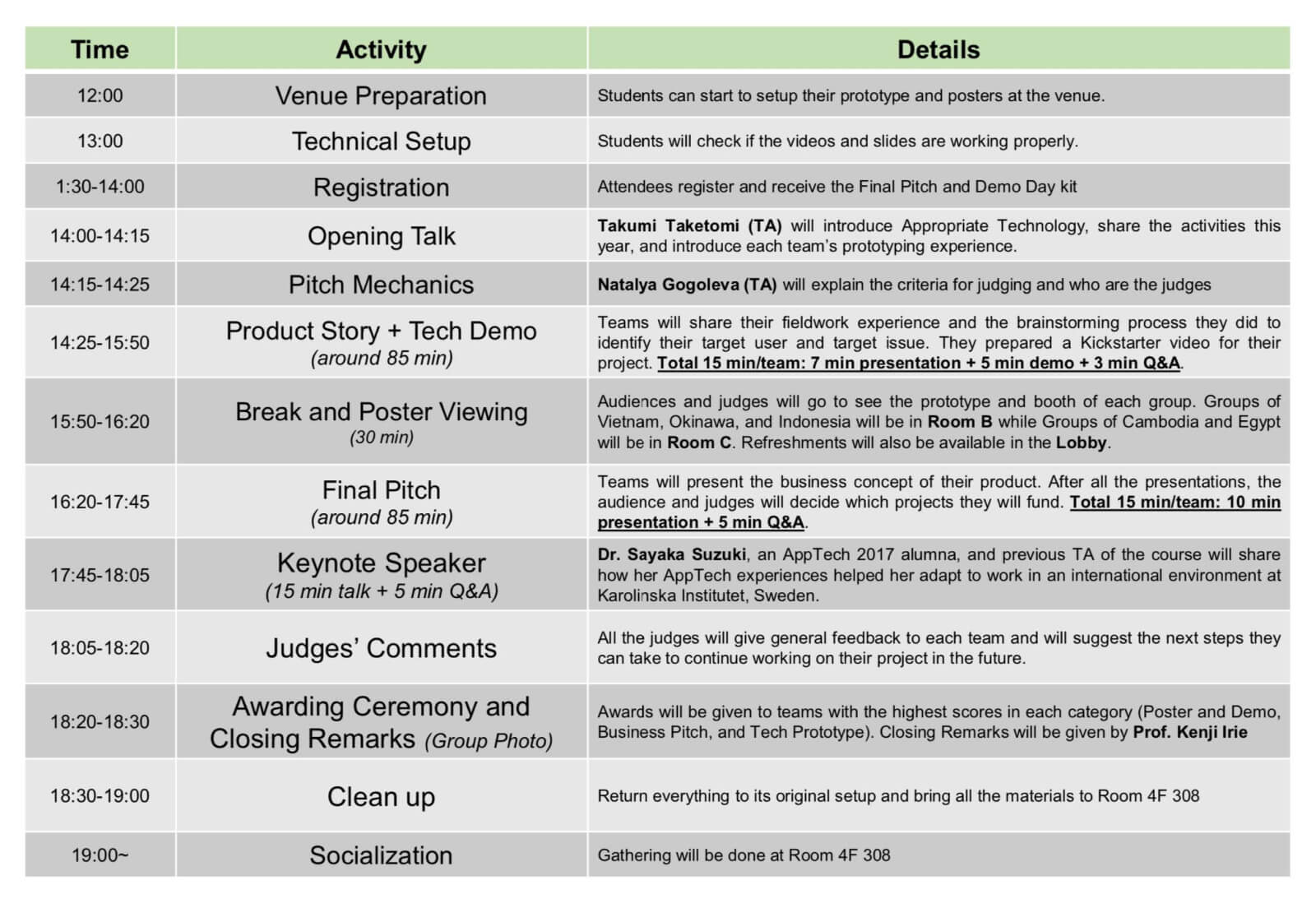Appropriate Technology Final Pitch and Demo Day 2023 was successfully held at the West Area, University of Tsukuba.
Appropriate Technology 2023: A return to its global roots!
December 9, 2023
Appropriate Technology Final Pitch and Demo Day 2023 was successfully held at the West Area, University of Tsukuba. It is a culmination of the 6-month prototyping journey of graduate students of School of Integrative and Global Majors (Ph.D. Program in Human Biology and Ph.D. Program in Humanics) and Institute of Medicine (Master’s Program in Medical Science). This event is open to the public and is composed of: Project Story Presentation, Technology Demonstration, Poster Session, and Business Plan Pitch. Judges were invited from different fields like arts and design, entrepreneurship, intellectual property protection, and representatives from different companies.
Appropriate Technology is a course where students work on a project that they are deeply passionate about, targeting to improve the quality of life of the people they want to help and contribute to UN’s Sustainable Development Goals (SDGs). The main challenge is to design for extreme affordability while providing a long-term solution. Students have independently selected their topics, arranged their field research, initiated collaborative partnerships with target users, NPOs, academia, and companies to achieve a preliminary proof-of-concept of their technology prototypes.
Started in 2012, Appropriate Technology course have done projects in several countries like Timor Leste, Bangladesh, Philippines, French Guiana, Myanmar, and India, among others. Its main philosophy is supporting underprivileged target users with simple technology solutions to overcome specific challenges in their daily lives. But since travel restrictions due to COVID-19 in 2020, overseas activities were limited to remote research where students conduct prototyping and testing with collaborators via online meetings. Although these initiatives promote international collaboration, the social interaction and immersion of the students with the target users and their environment is extremely restricted.
Upon the lifting of international travel restrictions, students can return to working hands-on overseas to understand more about the situation of their target communities to co-develop appropriate technologies with their users. This year’s projects were done in five different countries. Students have explored topics ranging from child development to preservation of culture and age-old practices. Here is a summary of each project:
Target Location: Nha Trang, Vietnam
Equipped with their initial passion about sleep, they went to Vietnam to learn more about people who have trouble in sleeping. They have identified that people receiving chemotherapy experience various pains that prevent them from falling asleep. They have developed an affordable tool to improve the sleeping environment and numb the pain sensations through microenvironment intervention. This provides a non-drug approach to the problem and will not only reduce the cost of cancer treatment but will also improve the patient's health and recovery. Their approach has also been reported to potentially reduce cancer growth in the point of contact due to activation of specific pathways. The team took advantage of innovative techniques from IIIS and smart materials technology from AIST. They have also obtained partnership with Innovation Thru Energy which produces a vital component in their “Sleep Well Kit”.
Target Location: Okinawa, Japan
The team wants to support Kodomo Daisan no Ibasho or Children’s third places. Specifically, those who provide free services to children. A third place is where students can stay, play, study, and eat after school. Although there were lots of after-school facilities in Japan that operates for profit, Okinawa experience a high number of students that relies of third places that provide their services for free. But the problem is these non-profit third places mainly depend on donations and are having difficulty sustaining their operations. The team developed a discreet sensor system to be able to transform these third places into product review hubs for companies, giving third places additional revenue for their operational costs. They have partnered with a third place in Okinawa as well as in Tsukuba for the execution of their plan. Toy and apparel companies spend a lot of money on their market research about the good product form and design. Review companies on the other hand mainly rely on questionnaires and parent surveys. With the integrated sensor technology, the actual interaction of children to the product can be accurately monitored, giving more reliable feedback that allows companies to design better products and children to obtain products that they really enjoy. An ecosystem that is a win-win for the Third Places and the underprivileged children.
Target Location: Bali, Indonesia
Kusamba salt is considered as one of the rarest and most delicious salts in the world. It has been a cultural heritage that has had its roots since the time of Balinese Kingdom. The salt is produced by splashing the sands with salt water and drying them into sand flakes, resulting in a unique flavor enriched by the volcanic sands. This is the reason why it can only be produced on that volcanic island. This traditional method is totally different from common salt evaporation practices, and it is more labor intensive. Upon their visit, they have discovered that the salt-production practice is on the brink of disappearing. The remaining salt farmers are mostly more than 60 years old and younger generations are afraid to continue doing it due to hard work which requires manually harvesting and splashing the seawater on the sand using their improvised buckets is very heavy. With the help of their collaborator in Russia, the team focused on creating an affordable ergonomic tool that not only support the aging salt farmers but may also encourage the younger generation to consider the salt-farming activity. The team also opted to have a social entrepreneurship approach where the salt farmers can take advantage of the tool design and create the tools by themselves, reducing the cost of production (by using locally available raw materials) and creating a potential income stream for farmers during rainy season (when they cannot produce salt). Since their device can also be used for other applications like carrying crops and merchandise, salt farmers can sell the heavy-duty (Kusamba farmers typically carry 60-80kg) tools that they have built to these potential markets.
Target Location: Phnom Phen, Cambodia
While working as a pharmacist, the developer saw first-hand that people diagnosed with non-communicable diseases such as hypertension and diabetes are getting younger each year. With this passion, she focused on creating an intervention tool that targets not only the young adults (20s-40s) but also the children, creating a more significant and long-lasting impact to health. In collaboration with the Faculty of System and Information Engineering and Mizuho Information and Research Institute, they developed a mobile application that is designed to be played by children with their parents, making nutrition education an interactive activity of the family. It took advantage of gamification to make learning fun and engaging. Using reward systems such as daily streaks, monthly challenges, and coop-RPG elements. In the app, the users will create their avatar that reflects their own eating activities. The mobile app does not only give information about food and its benefits/risk to different parts of the body, but it can also monitor eating habits and notify potential risk for over or malnutrition of the user.
Target Location: Cairo, Egypt
Growing up with friends that suffer from neurological disorders, the developers are very passionate about improving the quality of lives of people affected by these diseases. Due to poor neurological health, signaling pathways responsible for fine motor skills are greatly affected resulting to hand tremors, as observed with patients having Multiple Sclerosis or Parkinson’s Disease. Daily activities like writing, eating, and typing can be extremely difficult, limiting their sense of independence. The team talked with patients to identify what are their current challenges and what they are doing about it. They also consulted their technology concept with the Engineering Department of Alexandria University. After creating their alpha version in Egypt, they have conducted preliminary testing of their hand tremor management tool with patients using daily task such us eating and drinking. With these, they have identified the essential features they need to optimize and improve for the target users. As they returned to Tsukuba, they resumed prototyping and were able to reduce the cost of production to less than 1% of what is currently available in the market. They have also integrated a feature to improve the user’s grip while using hand tools. The developed hand tremors device is now being discussed with T-CReDO for conducting clinical trials here in Japan.
